In 2009 we acquired an ornamental Ancistrus labeled as Super Red Bristlenose. Throughout 2009 and 2010 we raised many standard fin Super Reds in substantial numbers. We also continued to keep Brown, Albino, and Blue-Eye, in Longfin and Standard (wild-type). I remember having a few discussions with Steve concerning putting longfin into the Super Red but we knew we were at least two years behind the curve on creating them. We expected the longfins to show up any day from Germany or from one of the US breeders that were working with Reds.
Some of the early stock we were working with:
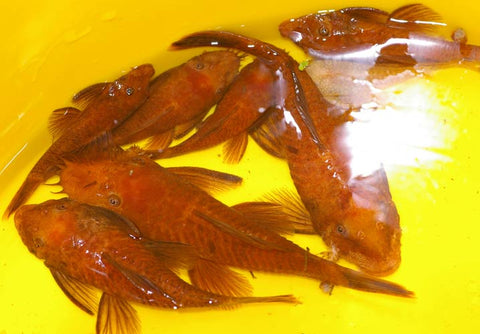
Early in 2011 we had plenty of standard Super Red in the hatcheries but for some reason we were still not seeing them being offered by anyone in Longfin. I had conversations with Steve about how to start the project. It was unclear which of the Bristlenose would make the best cross into the Reds. The wrong cross could mean many additional generations getting them to a good clean intense color. Calico Red would have probably been the best choice but the ones we acquired two years earlier had died in quarantine so that wasn't an option. Steve felt that Longfin Albino X Standard Red would work. I was leaning toward Longfin Blue-Eye X Standard Red. We set up both crosses and got spawns from the Albino X Red fairly quick, but not the Blue-Eye X Red. The Blue Eye seem to be quite a bit more difficult to get spawning, which proved to be true here, so these are lagging behind the Albino/Red cross. To complicate this, we probably have two different Albino genes in our bristlenose. On occasion we will get browns out of an Albino pair. Others in the hobby have also suggested that there are two different genes for Albino in bristlenose. We didn't know how this might interfere with the results. However, we had offspring from a couple of different pairs of Longfin Albino X Standard Red pairs and all the offspring were similar. The resulting juvenile fish were brown with a very attractive contrasting pattern. They grew fairly quickly throughout the winter of 2001-2012.
Example of the nice contrasting F1 Brown the cross produced:
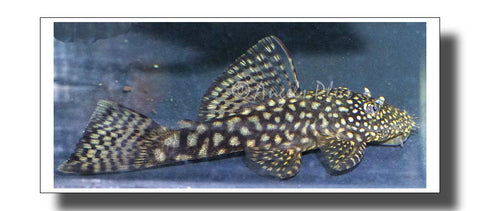
In Spring of 2013 the F1 Longfin Brown was crossed back to standard Red. The resulting fry were very interesting. I got a very small percentage of solid orange fry. Out of the first spawn, three of them were Longfin Red. The remaining fry ranged in color from light orange calico to very dark brown.
Examples showing the range we received in this generation:
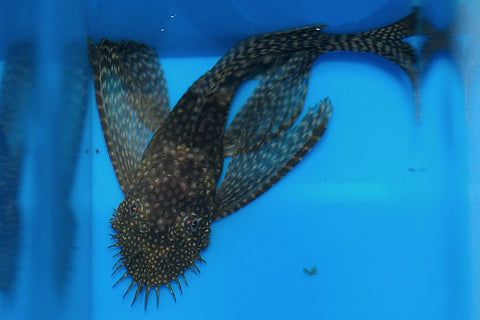
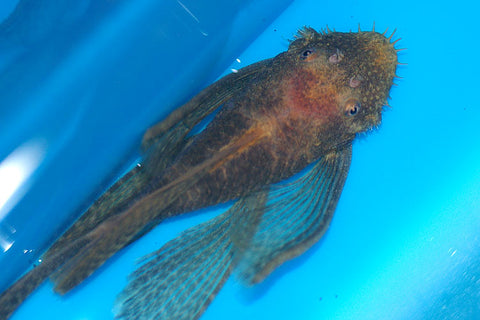
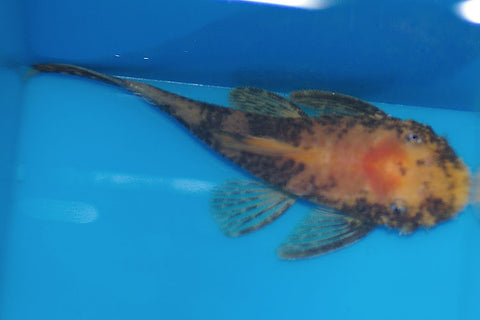
 longfin red bristlenose
longfin red bristlenose
In 2014 the three Longfin Reds from the first spawn were the first to reach maturity and were all crossed back to the original Super Red line. They are spawning very well. Spawns are 100% Super Red with 50% being Longfin. I currently have Longfin Red X Longfin Red pairs set up. These will be my first sibling crosses. I expect the fry to be very nice and with even longer fins.
F1 offspring from Longfin Red-cross to the original Red line:

Steve decided to cross the F1 Longfin Brown X Longfin Brown. He is getting a small percentage of very clean Super Reds with very long fins. He is currently growing these out. I have adults from the Blue Eye X Red cross. The F1 phenotype is that of a nice spotted Longfin Brown. I am crossing these back to Super Red and to Blue Eye. I am currently waiting for eggs.
The surprising part of this project has been how quickly the cross-bristlenose were brought back to a nice bright, clean color. We thought this might take more generations than it has. The genes controlling color must sort independently to a greater degree than we had a right to hope. We are anticipating the results of the Blue Eye X Red cross to see if any improvements can be made. We appreciate any comments you would like to make.
